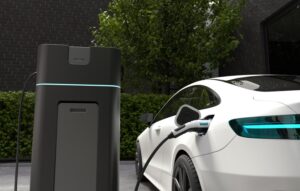
4 Advancements in Electric Vehicle Charging Technology
Electric vehicles are gaining popularity with many preferring them for their eco-friendliness.
Now, advancements in charging technology offer more convenience, with charging ports readily accessible in various locations by charge point operators, making electric vehicles a practical choice for sustainable transportation.
You just need to find charging spots for your car, and bam, you’re good to go!
Let’s check out the four key advancements in electric vehicle charging technology.
1. OCPP 2.0.1
OCPP 2.0.1, short for Open Charge Point Protocol version 2.0.1, is a communication protocol used in electric vehicle charging infrastructure. It standardizes communication between charging stations and central management systems, allowing for interoperability and seamless integration across different manufacturers and service providers.
Benefits of OCPP 2.0.1
- Interoperability: OCPP 2.0.1 ensures that charging stations from different manufacturers can communicate effectively, reducing compatibility issues.
- Remote Management: Operators can remotely monitor and control charging stations, allowing for efficient management of charging networks.
- Enhanced Security: The protocol includes advanced security features to protect against unauthorized access and cyber threats.
- Scalability: OCPP 2.0.1 supports large-scale charging networks, making it suitable for deployment in diverse environments, from public charging stations to private facilities.
- Future–Proofing: By adhering to an open standard, OCPP 2.0.1 ensures compatibility with future innovations and updates in electric vehicle technology and charging infrastructure.
2. Seamless Payments for EV Drivers
Seamless payments for electric vehicle (EV) drivers eliminate the need for manual transactions.
With this advancement, EV drivers can conveniently pay for charging sessions through integrated payment systems, enhancing the overall user experience and encouraging the adoption of electric vehicles.
How Seamless Payment Works:
- Automatic Billing: Charging stations are equipped with billing systems that automatically calculate the cost of charging based on factors like time or energy consumed.
- Mobile Payment Apps: EV drivers can use mobile payment apps linked to their charging accounts to initiate and complete transactions seamlessly.
- RFID Cards: Some charging networks offer RFID cards that users can tap on charging stations to initiate charging sessions, with payments processed automatically through their accounts.
3. Smart Charging Solutions
Smart charging solutions revolutionize the electric vehicle charging experience by optimizing charging schedules, managing energy demand, and integrating renewable energy sources. These solutions leverage advanced technologies like IoT (Internet of Things) and data analytics to make charging more efficient, cost-effective, and environmentally friendly.
Top 3 Smart Charging Solutions:
- Demand Response: Smart charging systems can adjust charging rates based on grid demand, reducing strain during peak hours and lowering electricity costs for EV owners.
- Vehicle-to-Grid (V2G) Integration: Electric vehicles equipped with V2G technology can not only draw energy from the grid but also return excess energy back to the grid when needed, contributing to grid stability and earning revenue for EV owners.
- Dynamic Pricing: Smart charging platforms offer dynamic pricing models that incentivize charging during off-peak hours when electricity is cheaper, encouraging users to shift their charging behavior and reduce energy costs.
4. Automatic Battery Heating
Automatic battery heating is a feature in electric vehicles that helps optimize charging performance in cold weather conditions. When temperatures drop, lithium-ion batteries can experience reduced efficiency and slower charging speeds.
Automatic battery heating systems preheat the battery pack before charging, ensuring optimal temperature conditions for faster and more efficient charging.
Benefits of Automatic Battery Heating
- Improved Charging Efficiency: Automatic battery heating ensures optimal temperature conditions for charging, allowing the battery to accept charge more efficiently, especially in cold weather, thereby reducing charging times.
- Enhanced Battery Performance: By maintaining the battery at an ideal temperature, automatic heating systems help preserve battery health and longevity, extending the lifespan of the battery pack and maximizing its overall performance.
- Extended Driving Range: Preheating the battery before charging helps mitigate the impact of cold weather on the range, ensuring that electric vehicles can achieve their full driving range even in low temperatures, providing greater convenience and reliability for drivers.
The advancements in electric vehicle charging technology listed above are making sustainable transportation more accessible and convenient than ever before.
With faster charging speeds, seamless payment options, smart charging solutions, and automatic battery heating, electric vehicle owners can enjoy enhanced convenience, efficiency, and reliability, paving the way for a cleaner and greener future.